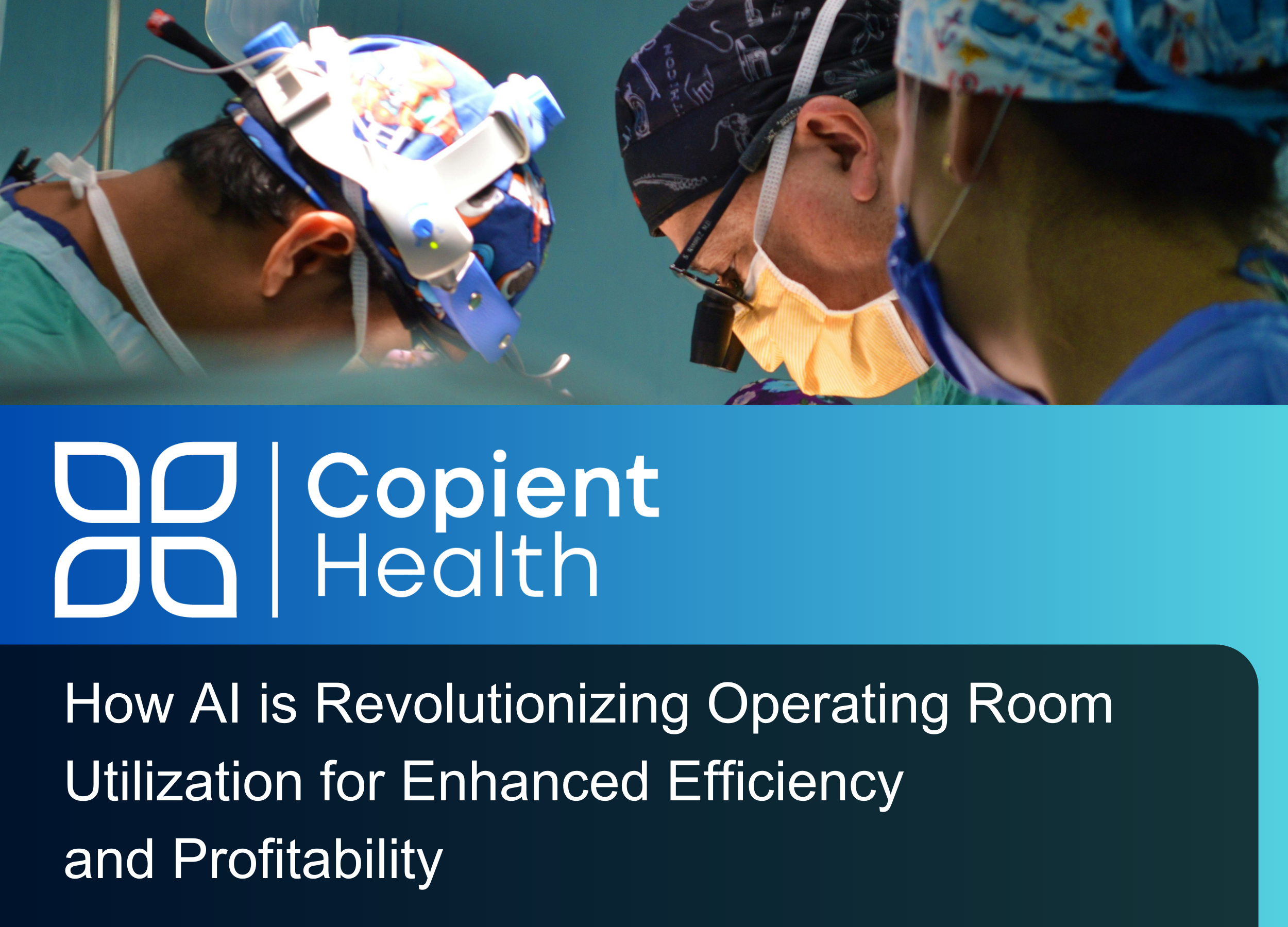4 Better Metrics to Improve OR Financial Performance at Ambulatory Surgery Centers

In the dynamic environment of Ambulatory Surgery Centers (ASCs), maximizing operating room (OR) utilization is crucial for enhancing patient care, accommodating more surgeons, and boosting financial performance. Traditional metrics, while helpful, often fall short of providing the nuanced insights needed for strategic OR management. Copient Health, at the forefront of Operating Room Utilization Optimization, proposes a shift toward a more sophisticated approach by focusing on four key performance indicators (KPIs). These metrics offer a deeper understanding of OR efficiency, enabling leaders and managers to make informed decisions that drive access, throughput, and financial success.
1. Total Volunteer Block Time Releases (in case hours)
Block time allocation is a critical component in managing OR schedules. However, not all allocated block times are utilized efficiently. The "Total Voluntary Block Time Releases" metric measures the amount of block time surgeons willingly release back to the scheduling pool, providing a window of opportunity for other procedures. This metric highlights underutilized block times and prompts a reevaluation of block time allocations, ensuring that OR time is not wasted and can be utilized by surgeons in need, thus optimizing OR efficiency and accessibility.
2. Case Backfill Rate
Understanding the "Case Backfill Rate," or the percentage of released block times that are successfully filled with other cases, is pivotal. This KPI reflects not only the ASC's ability to maximize OR utilization but also its flexibility in accommodating additional procedures on short notice. A higher backfill rate indicates efficient use of OR time, contributing to increased patient throughput and, consequently, enhanced financial performance. Monitoring this rate helps ASCs identify opportunities for improvement in scheduling practices and strategies.
3. Total Reclaimed Case Hours
The "Total Reclaimed Case Hours" metric quantifies the actual hours of OR time reclaimed through the efficient reallocation of released block times. This KPI provides a clear picture of the tangible gains in OR utilization resulting from effective scheduling and block time management. By focusing on reclaiming unused OR time, ASCs can significantly increase their capacity for additional cases, directly impacting patient access and throughput, as well as the bottom line.
4. Total Recaptured Margin
Finally, the "Total Recaptured Margin" metric measures the financial impact of optimizing OR utilization. It calculates the additional margin generated from revenue associated with increased case volumes and improved efficiency minus the costs associated with these additional cases. This KPI underscores the direct correlation between effective OR management and financial performance. By prioritizing the recapture of margin through enhanced utilization, ASCs can realize substantial financial benefits, underlining the importance of strategic OR management.
Conclusion
For ASC leaders and operating room managers, adopting these four metrics—Total Voluntary Block Time Releases, Case Backfill Rate, Total Reclaimed Case Hours, and Total Recaptured Margin—offers a pathway to achieving optimal OR utilization. By focusing on these KPIs, ASCs can ensure more effective use of their ORs, leading to increased access for surgeons, higher patient throughput, and ultimately, better financial performance.
Copient Health is dedicated to empowering ASCs with the tools and insights needed for success in today's competitive healthcare landscape. By leveraging these advanced metrics, your ASC can not only meet but exceed its operational and financial goals, ensuring a future of growth and excellence in patient care.

